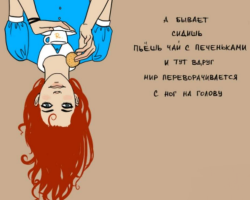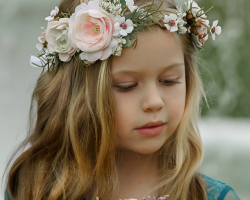The article will describe the benefits of the musical development of the child.
Content
- The role of musical education in the development of the child
- Features of the musical development of children by age
- Musically rhythmic development of children
- The development of musical hearing in children
- The musical aesthetic development of children
- Musical game a remedy for child development
- Exercises for the development of musical hearing and rhythm in children
- Musical development of young children 2-3 years
- Musical development of children 4 - 5 - 6 years old
- Musical development of children in elementary school
- Video: Musical education of a child
Pedagogy has long been introducing such an element as musical education in the education process.
- The musical education of the child should begin at preschool age. Moreover, many researchers indicate the benefit of the influence of music from the very first days of life
- Understanding art is one of the conditions for the development of a harmonious personality
- Musical education pay attention to schools and kindergartens. But parents, demonstrating their own example, should show the role of music in life
- Musical perception positively affects many spheres of life: develops a sense of beautiful, develops personal taste, makes it possible to better understand itself
The role of musical education in the development of the child
- The development of love for music introduces a small person to the property of world culture. Such a child becomes more erudite, aesthetically oriented
- Music positively affects the development of personality and the nervous system. Scientists have long established that classical instrumental music can slow down the heartbeat and relieve stress
- By means of music, the child learns the world around him. She leads him to new thoughts and feelings
- Researchers argue that musically developed children are more diligent in the spheres of life, they are easier to study at school
- Musical development stimulates mental. Those children who regularly engage in music have the best memory
- Musical education should begin with preschool age and be regular

Features of the musical development of children by age
- Children under 4 years old. This is a period of early development of the child, when children still have a visual-effective way of thinking. At this time, the kids only arise the desire to actively participate in the processes. They treat music with interest, can sing a children's song with adults. Also, some movements repeat with pleasure
- Children 4-6 years old. Preschool age, which is very important in musical education. At this time, the child forms a voice apparatus and the ability to move well. It is necessary to engage in singing, develop a rhythmic perception. Useful physical activity to the music, as the basis of the dance. Closer to 6 years, children are able to remember movements and correlate them with music
- Children 6-7 years old. At this age, babies can already reflect on the role of music. They already determine its emotional effect (sad or cheerful). This is the optimal time to start a musical education
Musically rhythmic development of children
- Musical and rhythmic education is closely related to the introduction of the baby to music. These are two aspect supplementing each other
- Rhythmic literacy is the ability to listen and hear music. be attentive and correlate the rhythm with movements
- Musical-rhythmic education is carried out by dance, games and music classes
- Elements of such education are acceptable from a very early age (such as, for example, rhythmic patting in your hands). But it is most important at the age of 5-7 years
- Rhythmic movements raise a sense of music in the child, develop physical skills, teach to coordinate the heard music with dance movements
- Musically rhythmic education develops creative abilities. The kid learns to independently invent movements and musical accompaniment in his imagination

The development of musical hearing in children
- Musical hearing is usually an innate phenomenon. But, in any case, it needs to be developed
- There are several ways to find out if the baby has a musical hearing. Spend a simple home test
- If the house has a musical instrument, play a simple game with your baby. Let him close his eyes, and you will press several keys (2). The child must say how many sounds sounded. You can change the number of sounds to find out how the child clearly determines them
- Another exercise, but more complicated. Fill a simple melody. Try to ensure that she is in the dignity permissible for the voice of the child. Ask him to repeat
- Musical hearing can be developed, even if it is absent. This requires regular classes and love of the baby for music
The musical aesthetic development of children
- By means of art, a person learns the world. He learns to distinguish good from the bad, to betray clear boundaries to his emotions, justify and put in words of feeling. Music is one of the most important branches of art
- The first thing that affects the musical preferences of the baby is an example of parents. From childhood hearing certain music, he builds ideas about the world on the basis of it
- Many teachers, including the famous Sukhomlinsky, noted that without musical perception, the full development of personality is impossible
- It is necessary to give the baby to develop his own taste, including a variety of music. From primary school age it is useful to discuss musical works. The child must be able to determine and express the emotions that the melody conveys

Musical game a remedy for child development
- In a playful way, the child comprehends the information easier. For him, game activity is little related to boring activities and therefore for pleasure
- So that the baby does not get tired, the games should be made more diverse
- You can’t get hung up on one type of games. It will quickly get tired and stop bringing the effect
- Combine music classes with other activities. Turn on the music during the baby's leisure. This will also be an important element of musical development
Exercises for the development of musical hearing and rhythm in children
- Joint listening to music is already a kind of exercise. Concentrate the attention of the baby at the pace and mood of music. If this is a song, then try to sing it together
- Find a melody where there will be a clear rhythm. Invite the baby to knock on the table with your fingers to the beat. You can start together, and then give the child the child himself to enter the rhythm
- At 5 - 6 years old, you can start memorizing poems and songs. This contributes to rhythmic perception
- Select the sound range in which the baby will not injure the voice. Play the note, drink it and ask the child to repeat. So sing the octave down and up
- Play the game with claps. Set a simple rhythm and let the baby repeat. As rhythmic perception develops, rhythms can be complicated
- Buy your child a children's drum. Play with him together, inventing your rhythms
- At the age of 6 - 7, the baby can be given to a music school, where special classes will be held on the development of creative abilities

Musical development of young children 2-3 years
- At such an early age, the baby is just beginning to recognize the world around him. Music for him is something new. And therefore, musical development should be individual
- Definitely need to periodically include music to the child. At the same time, the mother herself can hum and express interest
- Children are different about music. For some, she is not an irritant, they can listen to her on duty. Then you can include music quite often
- One of the elements of musical development at this age is the singing of the mother. Lullabies and other children's songs positively affect development
- Children's toys, such as clinic, can also be considered an element of musical development. Let it be randomly, but the baby is already trying to extract sounds from it. The main thing is not to interfere with him in his work
Musical development of children 4 - 5 - 6 years old
- Preschool age is one of the most important periods in the musical education of the child
- At 4 years old, the baby is already beginning to realize the music as something separate. It may be interested in different melodies. In a playful way, you can already start discussing what you heard. Tie tunes with interesting children's stories
- At the age of 5, the baby already has a sufficiently developed perception. He can convey emotions. The coordination of movements is already normal, you can connect dance exercises with music. Turn on music during exercises and leisure for the baby
- At the age of 6, the baby can get used to musical education. At this time, creative abilities are even outlined. Those children who have a real talent for music can come up with simple melodies

Musical development of children in elementary school
- In elementary school, musical education has two goals: familiarizing children with the basics of musical art and the development of talents
- In the first grade, children listen to the teacher, together perform exercises for the development of rhythm and hearing
- In the second and third grade, they are already starting to engage in singing, to master musical works, and get acquainted with the first composers
- If the baby has an interest in music, then his work should not be limited to a comprehensive school. In fact, it does not have much time is devoted to musical education
- But it is at school that the child will get acquainted with the instruments and will be able to choose the most suitable
Video: Musical education of a child






